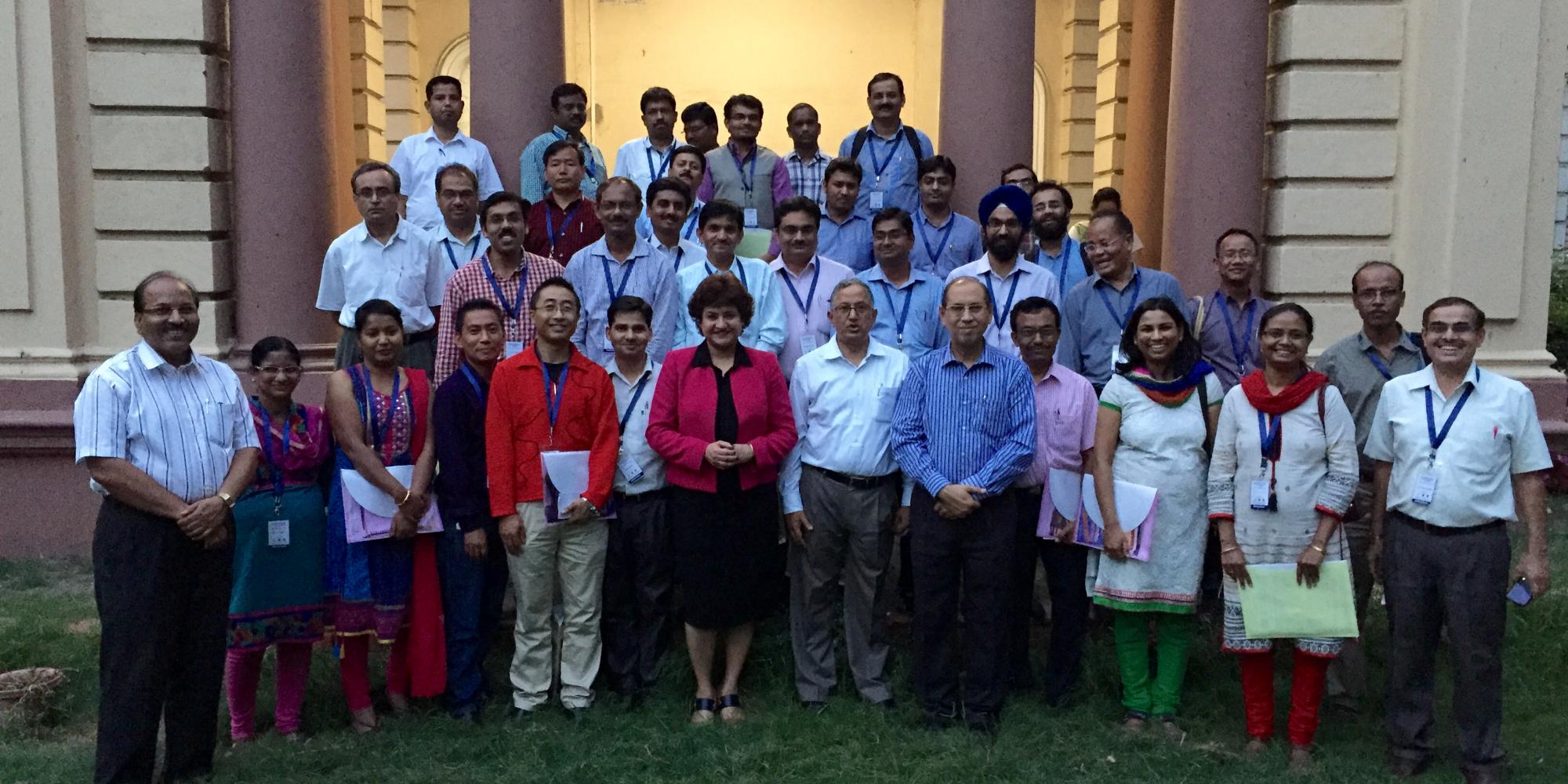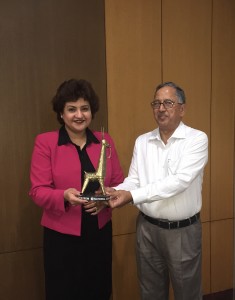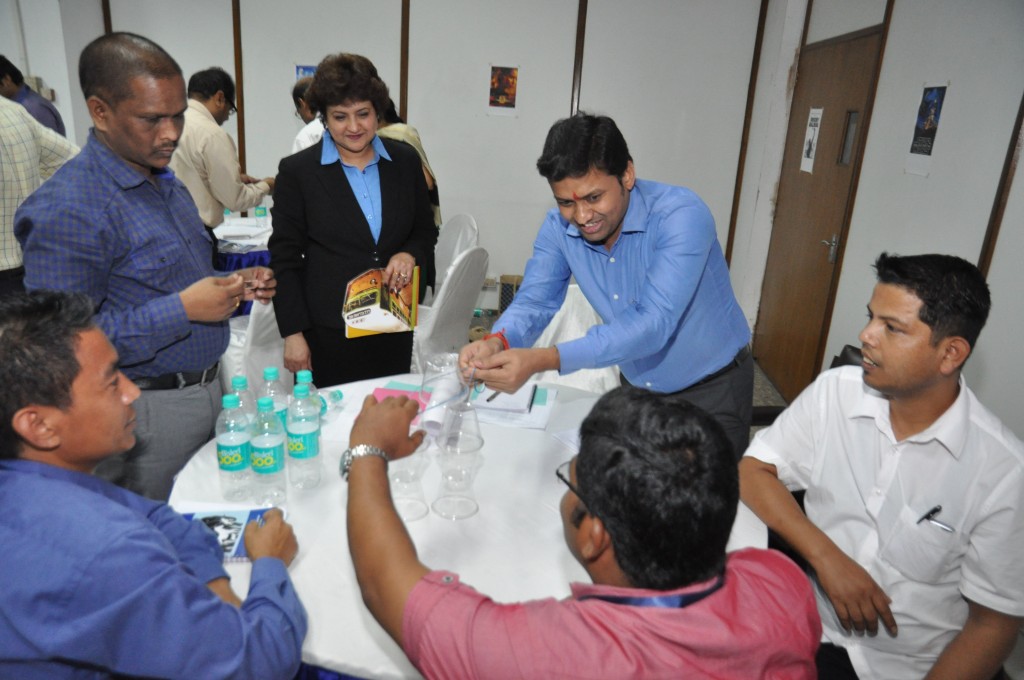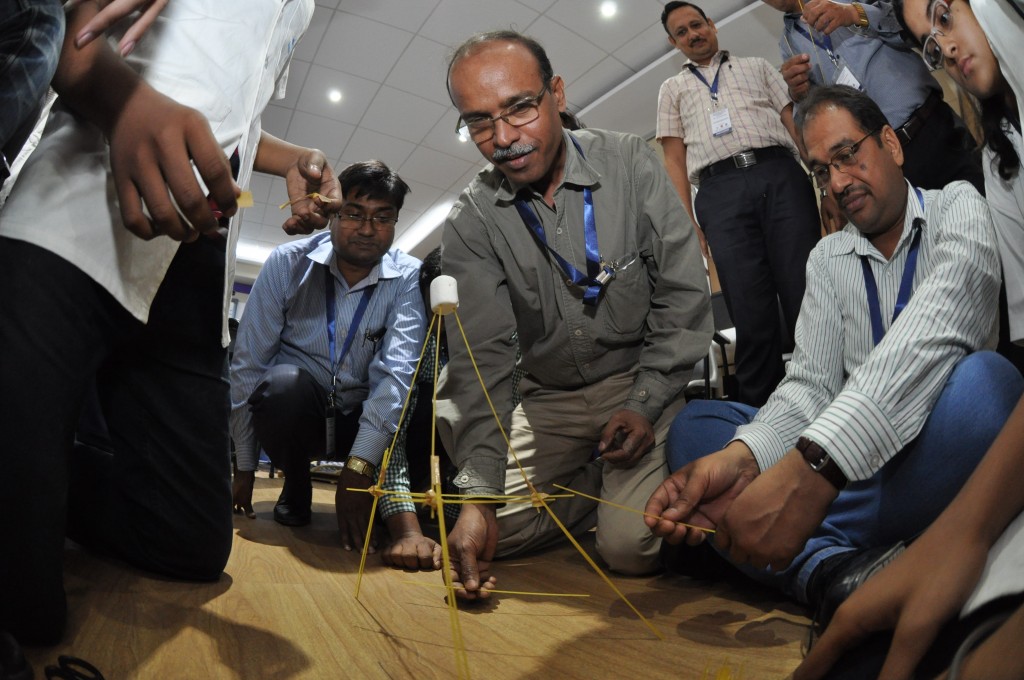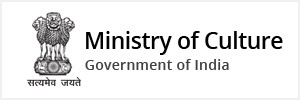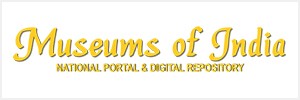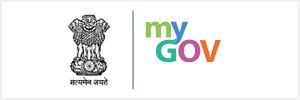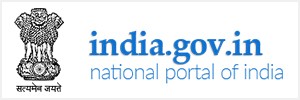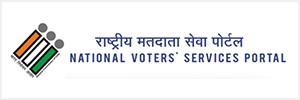Paula Gangopadhyay
Chief Learning Officer, The Henry Ford
Dearborn, Michigan, USA
Felicitation during the Workshop
Recently, I had the distinct opportunity to be the guest of National Council of Science Museums (NCSM) at their national headquarters in Kolkata, West Bengal, India. The three-day workshop held during March 26-28, 2015 entitled International Capacity Building Workshop on Innovation was well attended by nearly forty curators and coordinators from various Science Centers in India, five of which had already launched the Innovation Hubs within their centers. NCSM’s senior leadership also participated in the workshop.
I was invited to present a keynote talk on the ‘Power of Innovation and Collaboration in the 21st Century’ and give a comprehensive overview of the multifarious innovation-related initiatives and scalable-impact education projects, The Henry Ford (museums) is offering in the US. I was also requested to offer an abridged workshop on how to teach innovation with Innovation 101, The Henry Ford’s digital curriculum I have spearheaded, that uses interviews of current day innovators like Bill Gates, Steve Wozniak and others, and by juxtaposing them with stories of legendary innovators like Ford, Edison and the Wright Brothers, highlights the key traits and processes of innovation. More information can be found on our website www.oninnovation.com. I am leading the large-scale adoption of this curriculum across the US by training 5000 teachers in the next five years who will inspire 125,000 students to think and act like innovators.
I am passionate about this topic, regularly speak at national forums in US, and firmly believe that there’s an innovator in all of us. It’s truly an inherent trait that just needs to be brought out, nurtured and allowed to be activated as a mindset to bring about positive changes in the world. The highlights of my talk were as follows:
- The 21st century is demanding innovation and today’s workforce requires totally different skill-set than in the past. Innovation is the need of the day and we have to step up to meet the need of the day.
- Innovation can be taught, but you have to change how you teach or engage today’s youth.
- For innovation to make real impact, you need collaboration. The idea of a lone genius is truly a myth.
- Failure is an inseparable step in the process of innovation and must be embraced.
- Innovation leads to unintended consequences and in many instances innovation can lead to entrepreneurial opportunities, which then need to be optimized without delay.
- As educators in the broad sense, we are in the inspiration business, but to inspire others, we have to practice innovation ourselves.
- Activating innovation is not a quick-fix task. Be tenacious, positive, flexible and resourceful as your journey has just begun.
I demonstrated a few fun hands-on activities with which we can engage youth in thinking innovatively and those were very much appreciated by the participants. I was impressed to see the active interest and interaction of the participants with me. True many of the futuristic education ideas I was talking about, may not be directly applicable in India, due to obvious reasons of different environments and culture as in the US, but the participant were eager to ask questions, clarify doubts, openly share challenges they saw in the way of implementing some of the ideas, and seek solutions even in the form of adaptations. My goal as the keynote speaker was to inspire the participants to start thinking differently and develop a can-do attitude, as that’s the fundamental requirement of initiating innovative ideas. I sure felt I was able to accomplish that goal.
NCSM organizers did a great job of inviting to this workshop several other eminent academicians and practitioners who are working in India in the field of innovation and patenting. Hence the participants over the course of the three days, could learn about innovation from various angles.
I had my opportunity to learn as well, from overviews presented by the Innovation Hub coordinators on how they are implementing NCSM’s vision in Delhi, Bangalore, Mumbai, Guwahati and Kolkata. I had a brief opportunity to also see some of the exhibits at both Birla Industrial and Technological Museum (BITM), Kolkata and Science City, Kolkata. What I enjoyed the most…was the interaction with some of the super bright student hpw members, dedicated teachers and enthusiastic parents at the BITM, Kolkata. As they say in the business sector, if your consumers are excited, your battle is almost won.
There’s no doubt that there’s tremendous passion and interest in igniting innovation among the staff of the Science Centers and NCSM, as the leader of the network, is providing the needed resources and support. From what I observed during my three days at the workshop, my recommendations for the present and future success of the Innovation Hubs in India would be as follows:
- Encourage innovation even within the structure provided for the Innovation Hubs. Not all innovation hubs have to offer the same set of suggested activities within the core elements of the hub. NCSM can incentivize innovation by maybe starting an annual award for the ‘most innovative’ Innovation Hub within the network.
- Considering the large population in India, think critically and strategize how you can involve and impact many more youth in each city through the Innovation Hubs than the relatively smaller current start-up numbers. True impact can only be measured and shown by large-scale numbers.
- Proactively involve the parents as ambassadors and partners in the Innovation hubs. They can be a huge resource in promoting the value of innovation among other parents. Maybe start a parent advisory committee.
- Encourage the youth participants of the Innovation Hubs to take their ideas to more advanced prototype stages and facilitate their participation in some of the international innovation competitions. Challenge their energy by setting higher bars beyond just ideation, tinkering and make and take activities.
- Integrate some activities of the Innovation Hubs in the daily programs of the Science Centers to create more awareness and participation.
I want to thank NCSM Director General Mr. G. S. Rautela; Deputy Director General, Mr. A.S. Manekar; Director Mr. S. Kumar; Director of BITM, Mr. Islam; Director of Science City, Mr. A.D. Choudhury and Public Relations Officer, Mr. S. N. Singh for their gracious hospitality and attention to details during my visit. On a lighter note, I truly enjoyed some of the Bengali delicacies during the workshop such as Bhetcki Paturi, Mishty Doi and Bhindi Posto. The beautiful Bankura horse statue memento presented to me from NCSM, during the formal felicitation, will be treasured. My best wishes for the future success of NCSM’s Innovation Hubs in India.

